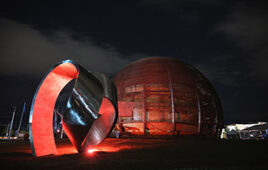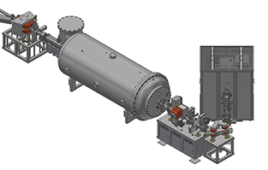 Florida State Univ. researchers are striving to make solar cells more effective at trapping and using light.
Florida State Univ. researchers are striving to make solar cells more effective at trapping and using light.
They’re one step closer.
In a new paper in the Journal of Physical Chemistry Letters, Asst. Prof. of Chemistry and Biochemistry Kenneth Hanson and his team have introduced a new strategy for generating more efficient solar cells. The team is composed of post-doctoral researcher Tanmay Banerjee and graduate students Sean Hill and Tristan Dilbeck.
“We’re looking not only for new materials but also new light harvesting processes to make solar cells better,” Hanson said.
Though solar cells have grown in popularity, they are still not widely used by the general public as an energy source due to their high cost and low efficiency. A typical solar cell, at maximum, converts less than 33% of light into electricity, so researchers have been working to find ways to surpass this limit and make cells more efficient.
In the past, scientists have put an extra photon upconversion filter before or after the cell to catch the low energy, unused light and convert it into usable, high-energy light. But, Hanson wanted to integrate this process directly into the cell.
The researchers were able to do that by using self-assembly. Through a soaking procedure, they assembled two molecules, an acceptor and sensitizer, on a surface. Once assembled, these molecules work in concert to perform photon upconverion, combining two low energy, green photons to generate a higher energy, blue photon, which can then be used to generate electricity.
Using this process in an optimized solar cell can increase the maximum efficiency from 33% to more than 45%. The team is also confident they can generate even better numbers in the future.
“It’s definitely a stepping stone toward making more efficient solar cells,” Hanson said. “Our current work demonstrates a feasible method.”
Scientists worldwide have been working on how to make more efficient solar cells through a variety of mechanisms and different materials. The solar market has grown considerably over the past few years, and as emphasis on clean energy grows, more resources will likely be devoted to creating better solar options.
A recent Dept. of Energy study estimates that solar energy, which is 0.05 of the current power supply, will grow to 14% by 2030 and 27 percent by 2050.
Hanson is a part of the Energy and Materials Strategic Initiative with the mission of producing high tech materials for new generation, energy sustainable technology. Members of the initiative are working on a variety of high-tech materials including solar cells, light emitting diodes and photoactive molecules.
Source: Florida State Univ.




